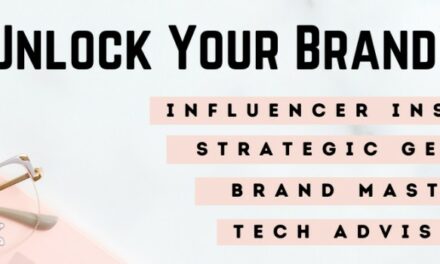
MARCH 1, 2024
5 things to do
He’s Been There; Now You Should Too
In 2013, Roberto Blake made a commitment to go all-in on his YouTube channel. That’s led to big success over the last 10-plus years. Among his many achievements, the entrepreneur has earned over 600K subscribers on his channel and founded the Awesome Creator Academy, providing online courses, coaching, and other resources for full-time content creators.
Here are the five things he did (sometimes later than he should have) that you should do now for your content business:
1. Show up even when you have no subscribers: Roberto started his YouTube channel in 2009. By September 2013, he had 30 or so uploads and zero subscribers. Then, a thought popped up: “What if I actually showed up every week?”
He did, and it worked well. In 11 months, he had an audience of 10K who willingly gave him their attention. In February 2024, he had 609K subscribers.
Helpful Resource: Create a Content Plan That Works for You and Your Audience
2. Think like your audience: When he got to 10K subscribers, Roberto was shocked and horrified. An introvert who worked from a home studio, he never liked attention. Now, he was under the microscope of 10K people.
“I had a living, permanent record on the internet, and I felt I was still practicing and I didn’t deserve an audience for still practicing,” he says.
Roberto reframed his thinking. He stopped thinking about how he felt; instead, he thought about how the audience felt. He shifted from creating videos he wanted to make to creating videos that would provide value to his audience.
Helpful Resource: Do You Know the Target Audience for Your Business?
3. Don’t go it alone: Roberto did everything in his content business for too long. “It’s probably a miracle I didn’t radically burnout,” he says.
His first hire? His sister came on board as a personal assistant, taking the admin work off his plate so he could focus on what he does best and what moves the needle for his business.
Hire or contract for those tasks that you don’t like to do or don’t do as well as someone else. Doing so lets you focus more on the tasks (often creating) that led you to get into the business, and that’s important for its long-term viability.
Helpful Resource: How To Hire a Virtual Assistant
4. Focus on the facts: “Ego is wildly expensive,” Roberto says. ”The opportunity to do even better was on the table, and I missed it because I didn’t put my own creative ego aside to be driven by the data,” he says of his 2015 success.
Instead of thinking he knew what was best for his audience, he should have looked at the data. That information tells you what’s proven to be most valuable to the audience, what captures their attention, what’s most helpful to them, etc., within the value system of your content tilt.
Helpful Resource: How To Set Up Google Analytics 4
5. Value metrics that matter: Roberto says the key is to know what the data is telling you and ignore what’s not helpful to your business.
For example, a frequent metric mentioned to assess success for videos is the total views-to-subscriber ratio. Yet, it’s not relevant because not all videos are the same. Roberto says a video about getting to the first 1K subscribers on YouTube receives a lot more views than a video about sponsorship deals. That’s because the market cap for a beginner audience is much bigger than the audience ready for sponsorship and brand deals. But that difference wouldn’t be noticed in the total views-to-subscriber ratio.
Use the data to understand where the audience is and what they value they experience in real time because that determines what gets a click or the all-important watch time.
Helpful Resource: How To Narrow the Metrics That Matter to Your Content Business
Learn in person how the mega-successful Roberto Blake uses AI in his content business during his presentation at CEX May 5 to 7 in Cleveland, Ohio.
Supported by:
StreamYard is the easiest way to create content right in your browser. You can multistream to your social media platforms, host a weekly show with special guests, create webinars, record podcasts with local recordings, create videos, and more.
StreamYard’s a popular tool amongst livestreamers, video creators, YouTubers, and podcasters – with features like live streaming, webinars, local recordings, screen sharing, and more, StreamYard makes it simple to get professional and polished content every time.
tilt publishing book club
Katie Brinkley is chief executive officer of Next Step Social Communications. In December, she launched the book, The Social Shift. She also will be speaking at CEX 2024.
Why this book? I make my living by posting on it for me and other businesses. But it really breaks my heart when I go to the park, and I see a group of teenagers sitting in a circle, and they’re all just sitting at their phones, and no one’s talking to each other.
I believe social media was originally intended to create community online that you could take offline. Social media has come a long way in the past two decades, but if we go back to its original intent of really fostering community and building relationships, then we don’t need to be on it so much.
How did you get started? I’d been wanting to write a book for maybe about six months … but I don’t know what it would really be about. It wasn’t until I started thinking when I was involved in all these NFT communities and Discord channels … How are we going to find community in this new Web3 world? I started building out how I saw social media in the beginning, where we are now, and what I think we’re going to see in the future … And the more I started writing, the more I realized the passion that I had was about us not really being on our devices so much.
Business goal? I wanted to have the book so that I would have more speaking opportunities. I think that it is a definite credibility booster. Since publishing the book, I was on Michael Stelzner’s podcast (Social Media Examiner). I’ve already gone to two conferences and been able to sell the book. It definitely elevates you.
Marketing? I created awareness posts about calling out the problems of how people are using social media. Then, I did the announcement, “Hey, I’m writing a book about how we can go back to the original intent of social media.” Then, I had people vote on the covers of the book, so people felt very invested in it. I had different people that said that they would love to be on my book launch team.
A couple of people asked me to go live in their Facebook groups, or we would do lives together leading up to the book coming out. I did a lot of podcast guesting where I talked about the book … So I started all of that about a month and a half before the book came out, just kind of talking about it. As far as marketing it now, it’s (promoted) in all of my emails at the bottom. I post pictures on social media of me with people holding my book after they buy ’em. And I’ve had a lot of people just take a picture of them holding their book. I’m going to more in-person networking events. And I take my book with me.
Other tips? If you want to write a book, you should … It was horrible when I was in it. And then, after it’s done and you are holding it, it’s like, “I want to do this again.” It’s so rewarding. It’s kind of like birthing a child. It’s why I have a second kid. You forget all about the terrible birth part, and then you just remember this amazing little baby, and you’re like, “I could do this again.”
5 things from the tilt
- FREE WEBINAR on Wednesday, March 6 – Before Social Media: The Marketing Elements You Need Before You Post with Annie Schiffmann
- Join the conversation about how in-person events can help you and your business at 12 p.m. US EST Tuesday on Tilt Your Business: A Weekly Mastermind for Content Entrepreneurs.
- An important piece of advice from David Bowie gets us talking about if we are really taking enough risks and getting uncomfortable enough with our content to be successful. (Content Inc.)
- Joe and Robert discuss whether the news content business model is sustainable. (This Old Marketing)
- In the latest episode of Publish & Prosper Matt & Lauren explore paid book promotion. (Publish & Prosper)
5 things to know
Money
-
Stack up: Karat, the company known for its creator credit cards, introduced Karat Insights, a free tool to let creators compare their earnings against anonymized financials from their peers. [Tubefilter]
Tilt Take: Definitely take the tool for a spin to evaluate your rates, but don’t let it impact your psyche. -
Powerful subs: The most profitable Substack newsletters include 1. Letters from an American (important historical events in political context), 2. Lenny’s Newsletter (practical advice on business growth, new products, personal careers), 3. The Pragmatic Engineer (mentoring software engineers), 4. Racket News (global news), and 5. The North Star with Shaun King (politics, power, race, change, and organization). [Insider Monkey]
Tilt Take: Though broad topics draw the biggest audiences, targeting niche audiences like software engineers can do well, too.
Audiences
-
Go longer: LinkedIn’s developing “suggested posts” to distribute content to targeted users for months or years after its original publication. [Entrepreneur]
Tilt Take: Good move to encourage creators on the platform. To show up in the suggestions, think about evergreen content that can still offer value long after you hit publish.
Tech and Tools
-
Money monitor: X added a monetization tab for premium users. It lets creators track subscription revenue and ad revenue-sharing expected from the platform. [X News Daily]
Tilt Take: Only the biggest Xers will probably care. And X shouldn’t have control of your subscription revenue anyway.
And Finally
-
Friendly hiring: Creators, including MrBeast’s Jimmy Donaldson, tend to hire what he calls “FOFs” – friends of friends. But this essayist argues it could have dangerous consequences. [Daily Dot]
Tilt Take: We agree. Just because you’re hiring family and friends doesn’t mean you don’t need to pay attention to mainstream business issues, such as harassment, bias, diversity, equity, and inclusion matters.
Get more of the Full Tilt stories on TheTilt.com.
Know a content creator who’s going full tilt? DM us or email [email protected].
Want to advertise on The Tilt? Go here.
Or email us at [email protected].
Was this email forwarded to you? Get your own sub here.
Copyright ©2024 Lulu Press, Inc. All rights reserved.
Update your preferences | Unsubscribe | 700 Park Offices Dr., Suite 250, Durham, NC 27709





